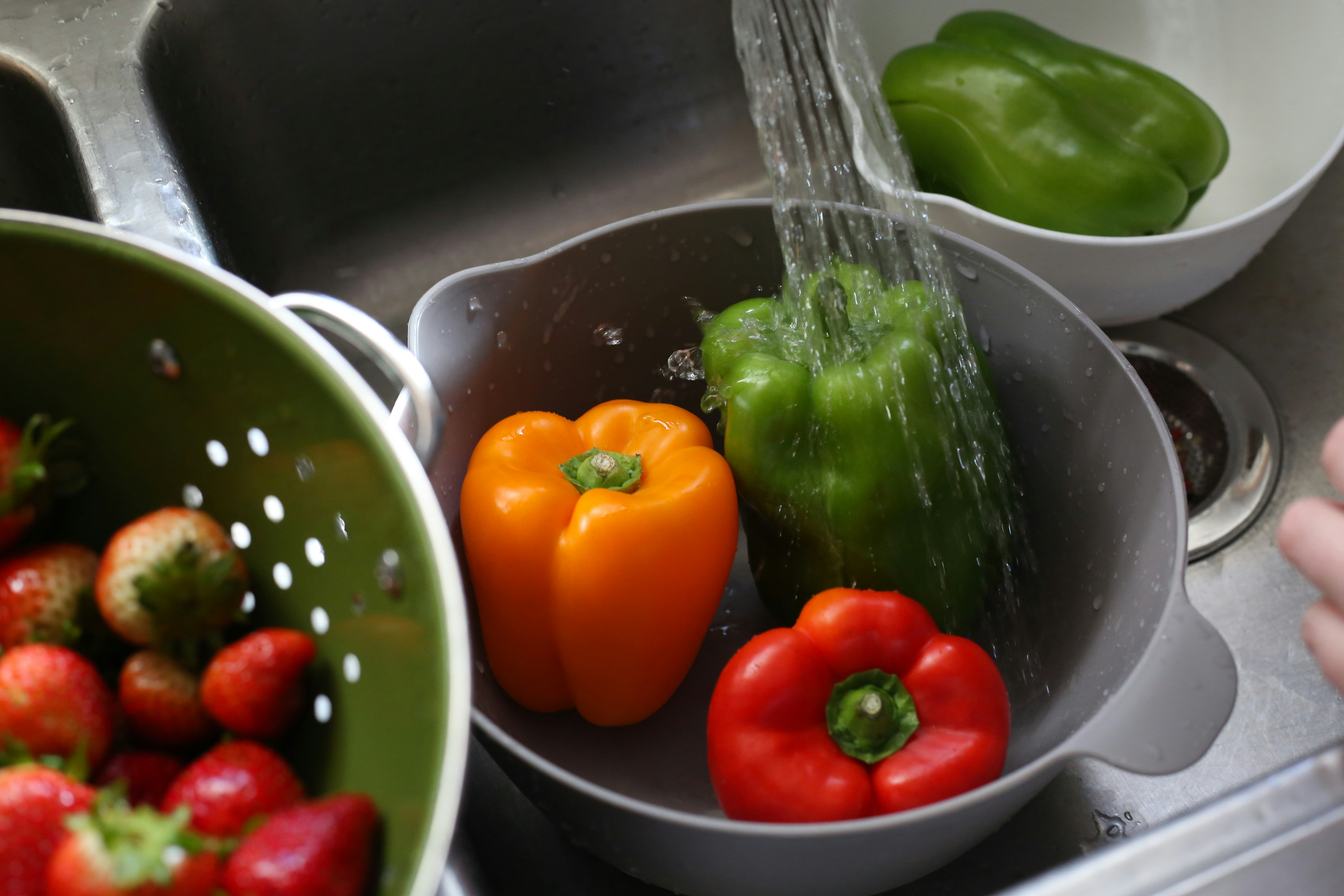An exercise in delving into new epithets of Brigantia.

(Image description: A photo of produce being cleaned in a sink. Water from a faucet is run over three bell peppers in a pot, one green, orange, and red. To its left is a metal colander with strawberries, and to its right is a white bowl with a green bell pepper in it.) Credit: Photo by Giorgio Trovato on Unsplash
Brigantia is both a known and an unknown deity. There’s a sizable portion of information that’s known from the depictions and inscriptions made to Her. However, that doesn’t mean delving into Her identity has to stop with only what has been discovered through archaeological means.
Recently, an article was written about the connections between Brigantia and Belisama, and the revealed Gaulish epithets apply to both goddesses. With the former, they relate with water to civilization and the earth. This concept has also been suggested in the Clann Bhride Book of Hours, and I’m glad to see the link being discussed.
Now, I have no experience working with Belisama, but perhaps I will include Her within my practice. At this time, I wanted to look into how I saw a couple epithets worked with Brigantia. This won’t be the only time I try this approach, so it will be an ongoing process of understanding.
I opted to use the Brigantia prayer beads I have as a focus and use a couple of epithets in a form of lectio divina. I used the name and its respective description to guide me as I repeated the epithets during separate sessions.
The first epithet I worked with is Onobiiâ (“water of life”). What came to mind were images of large machines watering immense fields, and on a much smaller scale, a hose nourishing a small vegetable or herb garden. The plants’ veins were fed with these waters, and in turn, this produce would eventually go onto feed people. Concurrently, the stress of this much water usage on a large scale was also pause to how care must be applied to maintain balance. Unfortunately, humanity’s need for water in agriculture is taxing to many aquifers, and we need to be aware of that.
The other epithet I worked with is Unnasentus (“of the water path”). The imagery with this one was more varied. There was an agricultural aspect, and also ones of hydration, cooking, bathing, and cleaning for mundane and spiritual purposes. In a way, these activities are more intrinsic to what humans have always done with water. I recalled the image of plants being offered as a way to honor the sacred waters; also, picking up litter and giving monetary donations were also methods of being in right relationship with the water.
Both times conveyed how integral water is for life on earth, and how much we often take it for granted. It’s all too easy to get water from the faucet and assume it’s coming from an infinite supply. That isn’t necessarily the case due to over-usage, war, inclement weather, and a drastically changing climate. Sometimes, it’s a situation of extremes, too much or too little. It’s crucial to find ways in how to balance the needs of civilization, life, and how much the Earth can reasonably provide.
I plan to continue working with these epithets, and I also want to work with the other ones mentioned in the linked article. I’m fascinated at how a handful of words can reveal the hidden depths of a deity and the aspects that often go ignored; I’m interested to see what else these terms will show about Brigantia and likely also about Belisama.
Leave a Reply